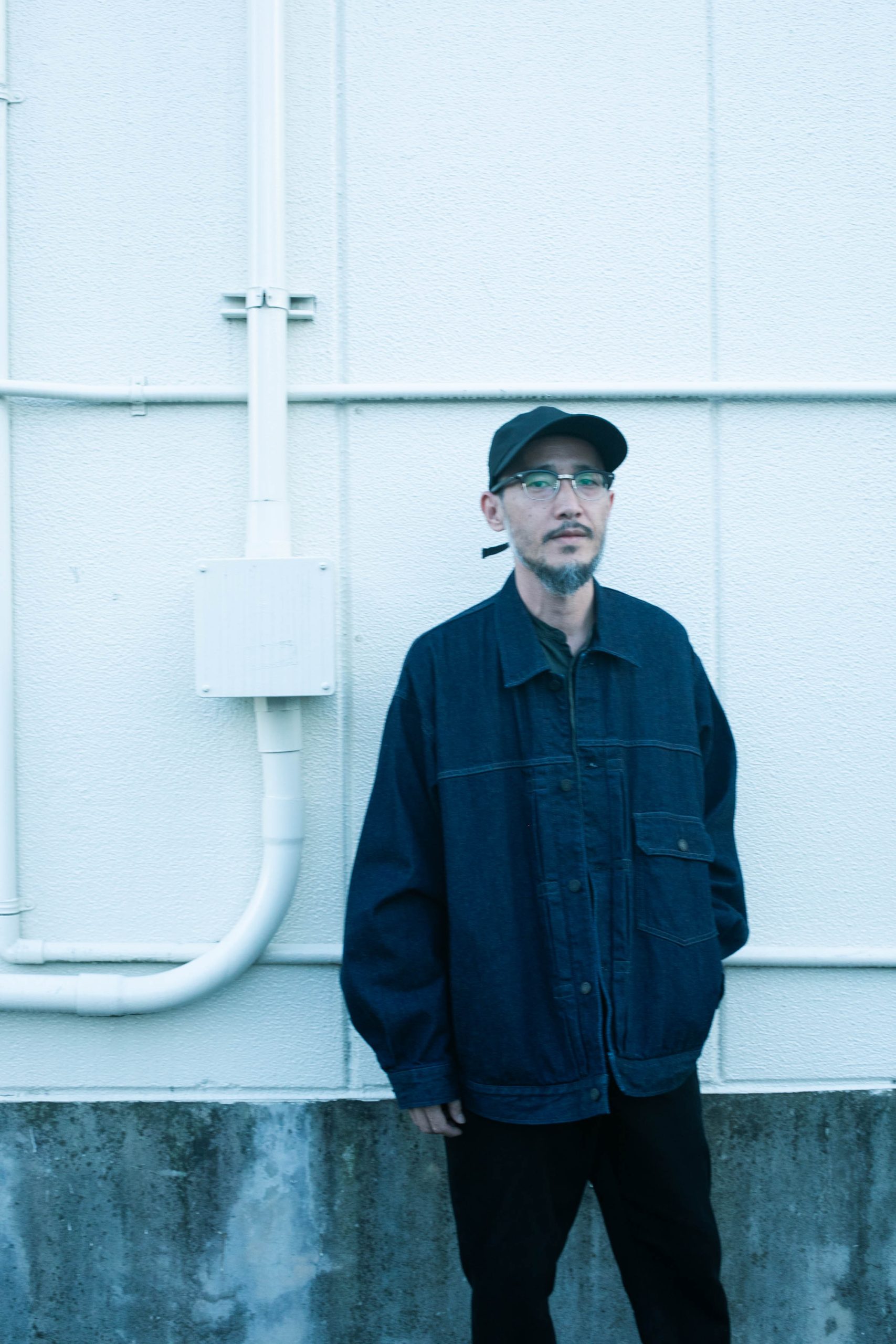
Chihei Hatakeyama
Chihei Hatakeyama released a solo album Minima Moralia from Chicago-based avant-garde music label Kranky in 2006. Since then, he has released many works from independent labels in Japan and overseas, such as Rural Colors in the UK, Under The Spire, Room 40 in Australia, and Home Normal in Japan, and has also performed live tours overseas. He is well known abroad and was ranked in the top 10 of Spotify’s 2017 “Most Played Japanese Artists Overseas”. In April, 2021, the album Late Spring was released from Gearbox Records in the UK. This year, the film for which he composed the music, Life is Climbing! was released in theaters. In recent years, he has been touring abroad, and in 2022, he toured 15 cities in the U.S. His newest work Hachirōgata Lake was released on September 1, 2022.
Since his debut in 2006, Tokyo-based electronic musician Chihei Hatakeyama has released a number of original pieces that have been highly acclaimed by listeners worldwide. His most recent album, Hachirōgata Lake, has a unique concept that can be clearly distinguished from his previous works.
As the title suggests, the album’s theme is the lake on the Oga Peninsula in Akita Prefecture, most of which was transformed into a vast agricultural area through a two-decades-long extensive reclamation project that began in 1957.
Last September, Hatakeyama visited Hachiroagata with a sound recorder in hand and made field recordings. Hatakeyama added the instrumental sounds to the sound sources obtained on this trip and completed it as a piece. How did this distinctive come into being? We sat down and talked to him about stories behind the recording process and his own views on ambient music.
Hachirōgata may not be far from my roots
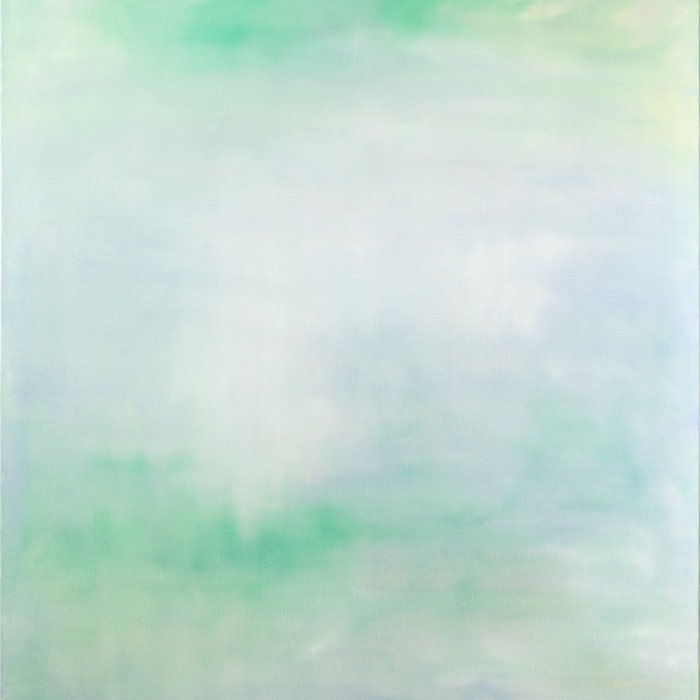
–How did you come to produce this work?
Chihei Hatakeyama (Hatakeyama): It all started when I was approached by a Dutch label music label called “Field Records.” As the name suggests, the label predominantly focuses on works featuring field recordings. SUGAI KEN had already released an album titled Tone River (2020), and they asked me to produce a work as a sequel to the album under the same theme: Japanese soundscapes.
–Did the label suggest you take up Hachirōgata Lake as a theme?
Hatakeyama: Yeah. Field Records has a connection with the Dutch Embassy. Related to that connection, it was suggested that I feature Hachirōgata Lake as a theme because, in the past, the Netherlands provided Japan with technical cooperation for a large-scale reclamation project of Hachirōgata Lake. The land area where Oogata Village is located now was built as a result of that land reclamation work starting in 1957. Reclamation technologies developed in the Netherlands, a country of reclamation, were utilized extensively in the project.
–Did you initially have an interest in the history of Hachirōgata before that?
Hatakeyama: Well, I am embarrassed, but I must confess that until I started working on this project, I was only somewhat aware of it as something I had learned about in geography class. I had never even been to Akita Prefecture, let alone to Hachirōgata. My father is from Hokkaido, and his ancestors emigrated from Tohoku to the frontier areas of Hokkaido around the Meiji era (1868-1912) and started living there. So, I have always had an interest in reclaimed areas. I felt related to that area also because I heard that there are many families in Akita Prefecture with the surname “Hatakeyama.” In addition, my father’s mother is also from Aomori, so my roots may not be far from there.
–Did you do any research on Hachirōgata before recording?
Hatakeyama: I did some before the visit, and after I arrived, I first visited the Oogata Village Reclamation Museum. I saw the exhibition and was struck by how people at the time had hope for a completely different future from what we see today. I was inspired by the young people of the time and the voices of the villagers.
What surprised me when I visited the area around the lake was how vast the reclaimed land was. It really is enormous. Most of it is farmland, and only a small part is inhabited, but I was overwhelmed by the open landscape all around. We had to move around on foot because we thought we would miss places with good acoustic conditions if we used a car. But it was such a challenging process because my legs were so tired from walking, and I sweated a lot even in a very short period of time, as it was done on one of the hottest days in September 2022 (laughs).
–Did you have a specific sound image that you wanted to record beforehand?
Hatakeyama: There are lakes and rivers around the reclaimed land, so I decided to focus on the sound of water before visiting there. The first stop on the way to Hachirōgata Lake after getting off the bus was the river flowing into the lake, and I recorded a flock of birds coming in and singing along with the sound of water. I used the sounds from that moment in the track called “Water And Birds.”
–Generally speaking, water is an important motif in field recordings. Why are musicians attracted to the sound of water?
Hatakeyama: One reason may be that it has substance and is tactually recognizable. Technically, air can also be touched, but for me, water has a particular sense of reality. And yet, it is not fixed in a definite form; it always changes according to the environment. This combination of substantiality and abstractness fits well with my view of music. There is also, of course, the interesting sound that water makes. If you listen carefully to seemingly repetitive sounds, you will find that no two sounds are ever the same.
–When you listen to the album, you will notice that there is a “sound of water” that is unique to each location. It is like each water sound makes you visualize a particular landscape.
Hatakeyama:Yeah, you are right. The scenery of the location where I recorded the sound for “Water And Birds” was also visually impressive. The landscape with small abandoned boats made me imagine how the once-flourishing place has turned into a forlorn and calm one.
–Indescribable sentiments are somehow encapsulated in these sounds, aren’t they?
Hatakeyama:Even when we moved to a different place after that recording session and went into an eatery, there were almost no people there. That kind of lonesome atmosphere is surely reflected in the whole album. Initially, I thought I was going to record the sounds of nature, but when I visited there, I realized that, of course, this place might not be “nature” after all. Rather, I found the mixture of “nature,” such as water and creatures and artificial things, fascinating. Like the sound of a pier at an unmanned boat ramp swaying in the wind. In the first track, “By The Pond,” the sound of fireworks coming from somewhere is layered on the sound of insects.
–That plosive sound, right? It certainly created an interesting effect.
Hatakeyama: What was also impressive was that there were points where the sounds of birds and insects suddenly disappeared, and almost no sound could be heard. I felt this kind of soundscape could only be created in a human-made environment. Part of the reason why it was so difficult to find recording points was that even when I found the appropriate ones, the noise, like loud crows’ voices, could drown out the others (laughs). So, I cut, layered, and edited the sounds meticulously, always bearing in mind that I was creating a musical piece.
Hatakeyama’s sound now stands in the line of the Onkyo music in the 2000s
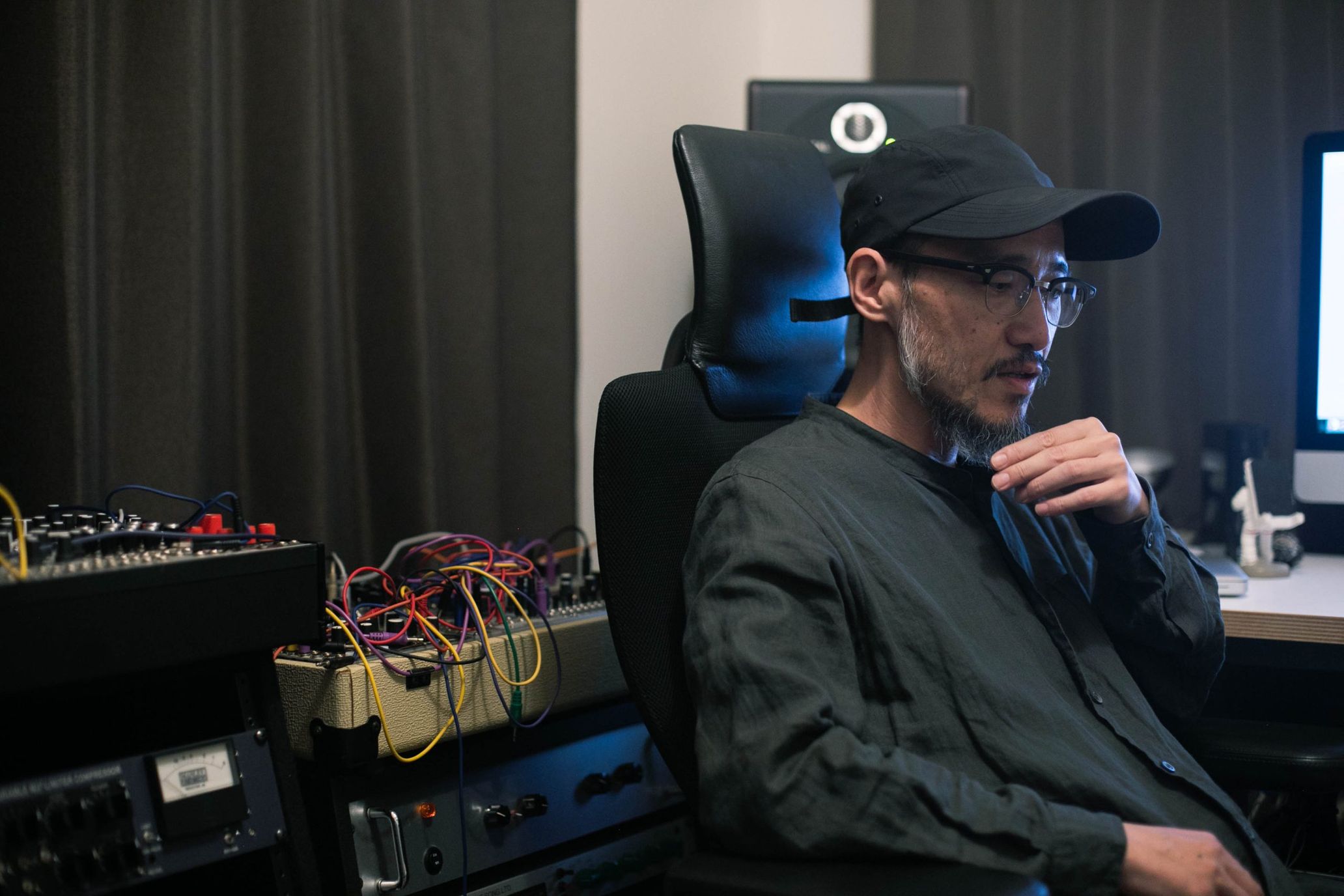
–Field-recording-based works tend to be thought of as “an objective recording of environmental sounds as they are,” but even the work only consisting of sounds from field recordings, not to mention the ones layered with instrumental sounds, can be reflections of the subjective sense and identity of the one who recorded the sounds at various levels. What do you think about that?
Hatakeyama:Yeah, you are right. I started to incorporate the methodology of field recording into my work almost 20 years ago, and I have gradually personalized the method since then. I choose various equipment and record at specific points, considering “how I capture the world.” And the more I have done this kind of recording, the more concrete my own method has become.
Additionally, when it comes to field recording, the use of high-performance microphones tends to be recommended. Still, such equipment sometimes “captures too much,” as in the case of a very high-resolution camera taking an image too clearly. It is undoubtedly true that details can be perceivable, but that does not necessarily mean that they are musically appropriate. Instead, I prefer a sound that is a bit more ambiguous. I don’t want to record a “bare environment.” Besides, the extremely high-definition sounds would not blend very well when combined with the instrumental sounds. Therefore, in this time, too, I used an inexpensive handheld recorder called the ZOOM H4.
–In recent years, several books about field recording have been published, and the presence of field recordings and works based on them is becoming increasingly important. Do you feel that?
Hatakeyama:Yes. I feel that recently, a lot of attention has been given to it in various places.
— This trend is not unrelated to the recent popularity of ambient music, which is closely linked to the idea of soundscape.
Hatakeyama: Yeah.
–Generally, the listeners recognize you as one of the leading artists of the contemporary ambient music scene.
Hatakeyama:Well, I don’t know. I am often told so, but in fact, I have been thinking about it a little, if not feeling a little uncomfortable.
–What do you mean?
Hatakeyama:I started my practices as a musician in the mid-2000s, but it is only in the last ten years that my music has come to be clearly defined as ambient, which is probably related to the boom in Japanese ambient pieces produced in the past. However, I am aware that I started making music with a strong influence from the electronica of the 2000s and the so-called “Onkyo music movement” of the same era.
If I were to name a specific work, I remember how massively shocked I was when I first heard Fennesz’s “Endless Summer” (2001). That’s why I think my work is somewhat different from the style of prevailing ambient music now. Fennesz’s “Endless Summer” is now considered a masterpiece of ambient music, but it was probably not even recognized as ambient when it was released. Of course, I was listening to the chill-out and ambient house music that was popular in the 1990s. It was just around the time when Haruomi Hosono was still producing ambient music. I remember I went to a DJ event co-hosted by Mixmaster Morris and Hosono, which was the first opportunity for me to be exposed to ambient music events. Then, I first got a music sequencer and a cassette MTR, with which I experimented a lot to see if I could do something interesting. I also had an improvisational music band with friends. I wish I had tapes or MDs from that period, but I have thrown them all away. My works from that period might also be defined as what we now call ambient.
–Sounds interesting.
Hatakeyama:I was also shocked by the radical methods of Carsten Nicolai and Ryoji Ikeda, who stripped away the melody and thematized the pure sound of the materials. I was also interested in the improvisational music of Derek Bailey and his ilk. The musical inspiration from these musicians led to my debut album, MinimaMoralia (2006).What I am trying to say here is that I wasn’t really conscious of the term “ambient” at least at the beginning of my career, and I think my stance is basically the same even today.
What is interesting, however, is that the term is changing: what the term “ambient” in the 90s referred to in the 90s is totally different from what the term refers to now. The ever-expanding scope of ambient makes me think the definition of ambient music can vary depending on the listener’s or producer’s interpretation of the term. I myself am often inadvertently bound by the word, but I also try to create a piece of music that is on the boundary between ambient and non-ambient.

— Listening to the sounds you create, including this album, I understand what you mean. For example, the way you use guitar sounds differs from how they are usually used in the context of ambient music and is more like the one in post-rock or alternative rock.
Hatakeyama:That’s right. It is primarily because I have loved metal music since I was in high school. I still love it. Also, the Velvet Underground had the most significant influence on me. From there, I started listening to My Bloody Valentine. That is, I think my music can be placed in the line of alternative rock, which is part of the reason why I dare to use the Flying V, a typical rock guitar, on stage (laughs).
About ten years ago, I was working not only as a solo artist but also in bands and a project working on music with vocals. I didn’t actually sing, well, I did a bit of backing chorus. For the past decade, I’ve spent most of my time managing labels and doing solo work, but I’m thinking about expanding my style in various ways again. I will be releasing an album with jazz drummer Shun Ishiwaka next year. It will be my first work accompanied with drums in a long time, which will be pretty epoch-making for me. However, this album is definitely influenced by so-called ambient masterpieces, like Brian Eno’s “Ambient 4: On Land” (1982).
–That album also incorporated field-recorded sounds, didn’t it? It was a dark album that evokes an image of desolate countryside.
Hatakeyama: Yes, it is. I used that atmosphere as a great reference.
— Did you score the phrases of each instrument as you produced the music? Or did you improvise?
Hatakeyama: It was somewhere in between. It was not, “Let’s put this kind of sound here to give it this meaning,” but I added them intuitively. Some of the sounds were added in a session-like manner while playing field recordings, and others were made from materials I created in the past that seemed to fit.
Actually, since the COVID-19 outbreak, I had been in a bit of a slump. I thought I would have time to create a lot of songs, and in fact, I was accumulating a stock of sound fragments. However, I found myself at an impasse, and none of them seemed to sound right. It was the first time for me to have such an experience. However, as I toured the U.S. and worked on film music, my feelings gradually began to change around the summer of 2022, and I suddenly felt that I was getting back into the swing of things.
Looking back, the reason I was in a slump was because I couldn’t perform live during that time, and I was away from the act of actually shaking the air and making a sound in front of people. So, I think the first tour in a while was a great stimulus for me, and I could feel the phrases I played fresh once again. I started working on this piece around September 2022, just after I came out of my slump.
–From what you just said, the process of going to the lake and recording the vibrations of the air while walking with your tired feet may have worked as a form of self-therapy.
Hatakeyama:That is absolutely true. In that sense, Hachirōgata Lake, which is not far from my roots, was a perfect place to visit. Even though it was my first visit there, it was easy to form a mental picture based on the place, and the landscapes and sounds of Hachirōgata Lake made me feel nostalgic somehow. It was a strange experience.
Also, I began to think about whether my life would continue as it is due to the tragic wars that are taking place around the world. I’m sure that making this album itself was a way of deeply reflecting on myself, while carrying that kind of feeling with me.
Photography Mayumi Hosokura

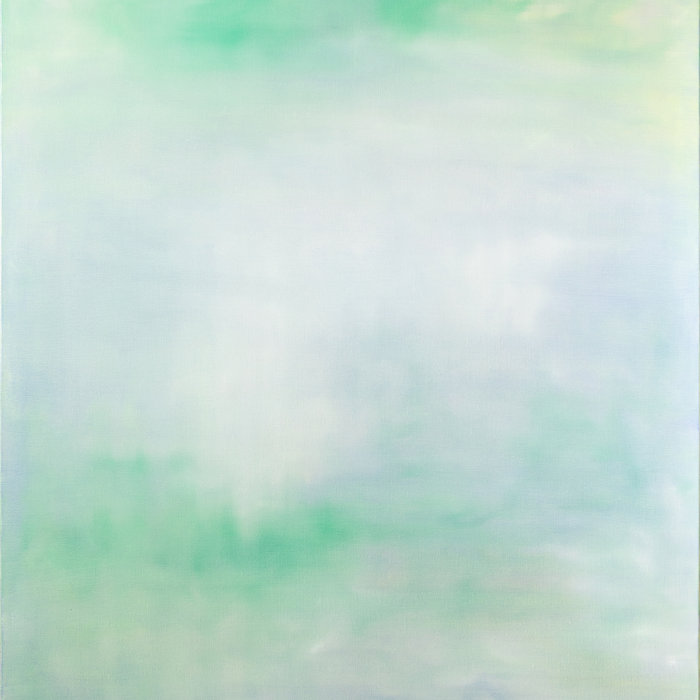
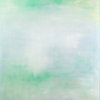 chiheihatakeyama.bandcamp.com
chiheihatakeyama.bandcamp.com